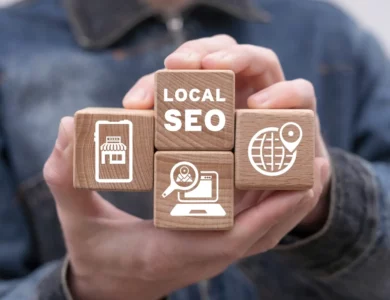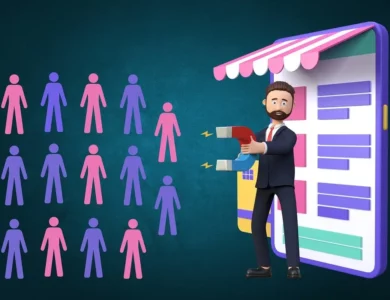
B2B companies live and die on lead generation. With their long sales cycles and high-value contracts, B2B businesses must keep their sales pipelines full.
More and more often, B2B leads arrive through digital channels. As older, less tech-savvy workers leave the workforce, more and more purchasers and decision-makers are technically proficient gen X-ers, Millennials, and even Gen Zs.
Is your website delivering enough leads? If you’re concerned about your online B2B lead generation, one or more of the following mistakes may be holding you back. Let’s get into it!
1. Long, frustrating quote forms
Many companies offer free quotes online. It’s a good call to action to collect the contact details of interested customers while starting the sales process. Companies go wrong by trying to collect too much information all at once.
Customers shouldn’t have to work to get in touch with your sales team. While qualifying leads is important, losing leads to form abandonment shouldn’t happen. A lead form should capture only the essential information needed for your sales team to follow up. Typically, that should be no more than five fields of information — less is best. The more fields a user has to fill, the greater the chance they get cold feet and don’t submit a form at all!
A simple quote form can require your sales team to do more work qualifying new leads. It is important to develop a simple, repeatable qualifying process to keep their workload manageable.
2. Failing to answer your customer’s questions
When new prospects arrive on your website, they’re looking for answers. Often, they are shopping around for the best solution to a challenge faced by their business. Does your content answer their questions?
Many businesses accidentally produce content aimed at themselves. Website copy tends to talk about why their business is so great, the accomplishments of their team, and their biggest and most exciting clients. This can seem like the right thing to do, but it isn’t! None of this content addresses the customer’s needs.
The customer needs answers to specific questions. They need to know how your product or service can make their lives easier, improve revenue, or reduce costs. When content creators invest time in researching and understanding their audience, they can produce content that will address these needs.
3. Offering users a bad brand experience
There’s a time and place for prioritizing function over form. Not everything needs to look pretty if it works! Your website isn’t one of those places. How well your website works to generate leads will depend on the quality of the experience offered. As technologies and design trends change, so do customer expectations. A seriously outdated, slow, or unattractive website can impact your lead generation performance.

Business owners may be rightfully leery of investing money into a major website rebuild. Doing it right can be expensive, and many web design agencies will recommend a new site even if your existing site is acceptable. However, there is hard evidence that a bad website hurts your business.
The journey from website visitor to paying customer happens in stages. Often, users skim several competing websites before shortlisting candidates to research more thoroughly. They may initially spend 30 seconds or less on each website. Suppose your website takes fifteen seconds to load, looks like a relic from twenty years ago, and doesn’t communicate your selling propositions quickly and attractively. In that case, you may not pass the first round of customer consideration.
More often than ever, a B2B sales cycle will occur across multiple devices. A customer might first look you up on their desktop computer at work, then do more research on their phone on the train home before completing a lead form from their laptop that evening. Outdated websites may offer a poor experience for smaller screens like phones and laptops. If users struggle to navigate your website from their phones, they may move on to the next company.
Think of your website as an extension of your physical location. Put the same care and attention into your website as you would for a physical storefront, a work uniform, or a big client presentation. We can expect underwhelming results when your website is an afterthought in your marketing strategy.
4. Taking a “one size fits all” approach to content
Every customer has different tastes, hobbies, and interests. They are motivated by different things. One customer may be best influenced by hearing about how your product’s tech is the latest and greatest. Another may be better influenced by hearing how your product will save them time or money. Some customers prefer to learn via video, podcast, or webinar. Others want an article or case study to read and digest.
When developing website content, we should consider different paths our customers may take to make a purchase. Ideally, businesses will develop a range of content types and interlink them appropriately, so users can easily navigate to the information that suits them best. Offering users a choice in how they engage with your business will put them at ease and increase your conversion rates.








That’s such a brilliant explanation. Loved all the points, especially the first one. As you explained, it’s really important to strike the right balance there. Thank you so much for sharing!